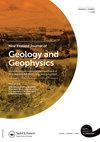An initial assessment of short-term eruption forecasting options in New Zealand
IF 1.9
4区 地球科学
Q1 GEOLOGY
New Zealand Journal of Geology and Geophysics
Pub Date : 2022-05-29
DOI:10.1080/00288306.2022.2080236
引用次数: 2
Abstract
ABSTRACT There are currently no quantitative short-term eruption forecasts based on peer-reviewed and validated models that are operational for New Zealand’s volcanoes. Specific forecasts produced for work-risk assessments are not generally publicised. During a volcanic crisis, eruption forecasts are demanded under high stress and time-restricted conditions. Many forecasting options exist but none are proven as universally viable, with testing and calibration limited to the hindcasting of specific events. Here, we compare the requirements of six methods with currently available data and monitoring capabilities at each of New Zealand’s volcanoes to determine which methods are currently feasible, as well as those options that may be implemented with additional effort or equipment. In New Zealand, the major limiting factor in method selection is the low number of past instrumentally monitored eruptions. This data gap may be filled by carefully selected analogue data from a global volcano set and expert knowledge. Event trees and the failure forecasting method may be set up at most volcanoes with minimal effort, but the latter can only forecast eruption onset time. Expert interpretation is the only method available in New Zealand for any forecast output type.新西兰短期火山喷发预测方案的初步评估
本文章由计算机程序翻译,如有差异,请以英文原文为准。
求助全文
约1分钟内获得全文
求助全文
来源期刊
CiteScore
5.10
自引率
27.30%
发文量
34
审稿时长
>12 weeks
期刊介绍:
Aims: New Zealand is well respected for its growing research activity in the geosciences, particularly in circum-Pacific earth science. The New Zealand Journal of Geology and Geophysics plays an important role in disseminating field-based, experimental, and theoretical research to geoscientists with interests both within and beyond the circum-Pacific. Scope of submissions: The New Zealand Journal of Geology and Geophysics publishes original research papers, review papers, short communications and letters. We welcome submissions on all aspects of the earth sciences relevant to New Zealand, the Pacific Rim, and Antarctica. The subject matter includes geology, geophysics, physical geography and pedology.

 求助内容:
求助内容: 应助结果提醒方式:
应助结果提醒方式:


